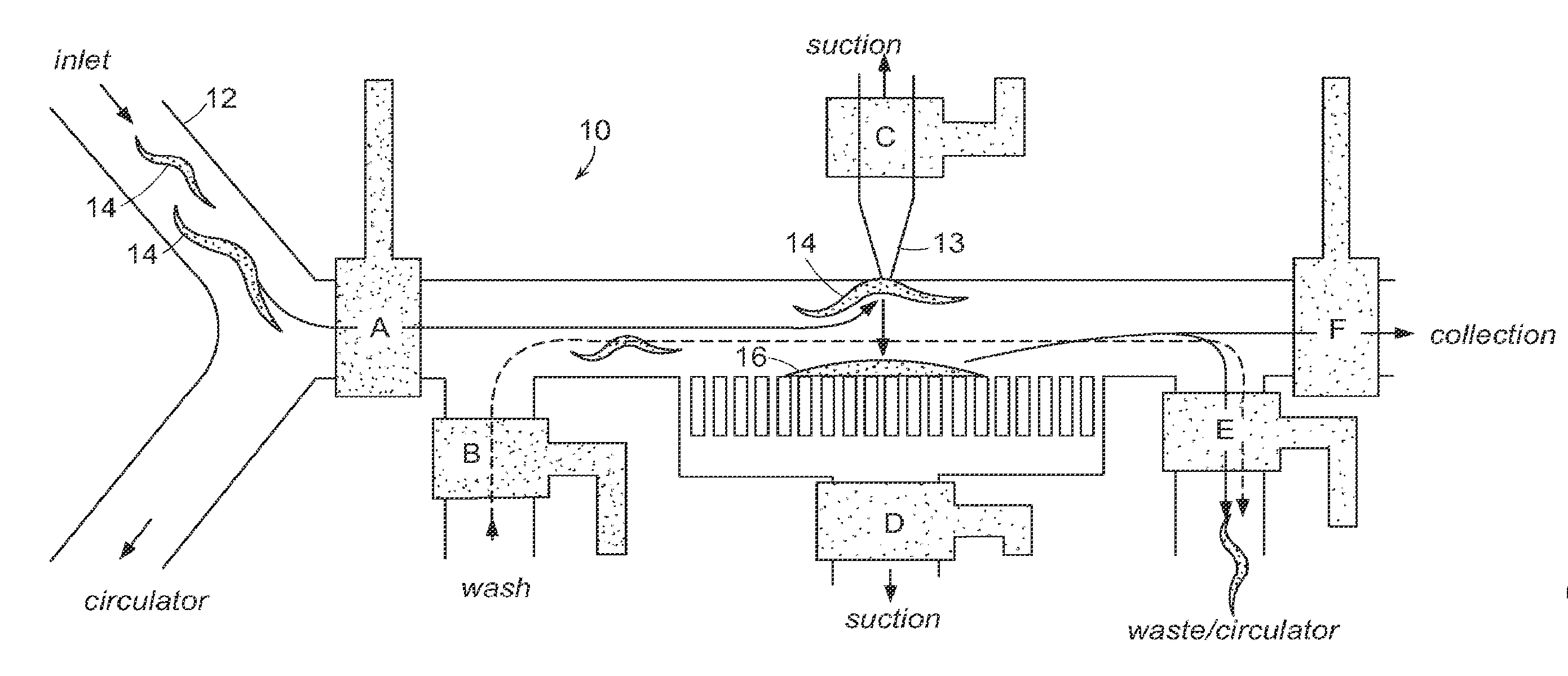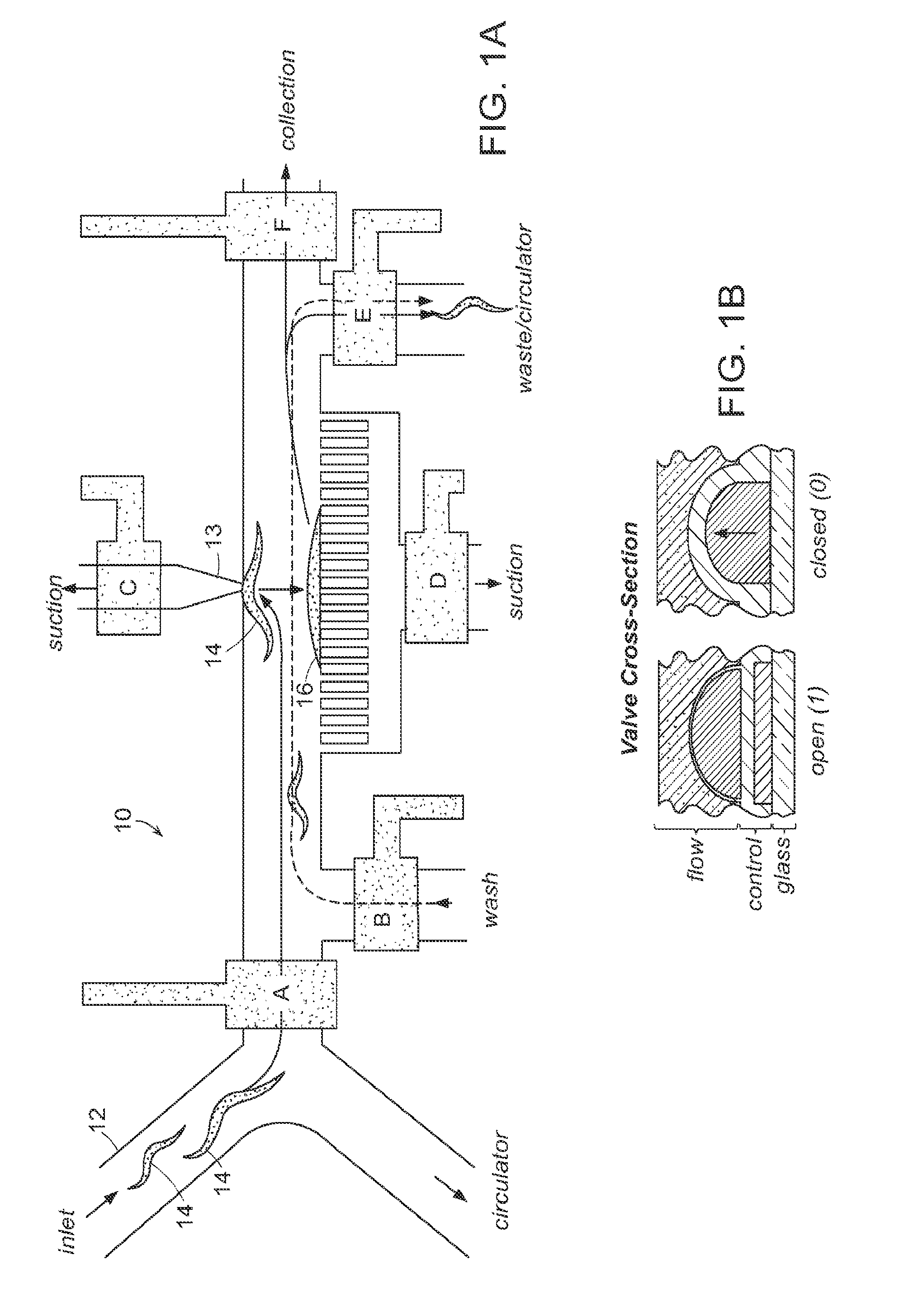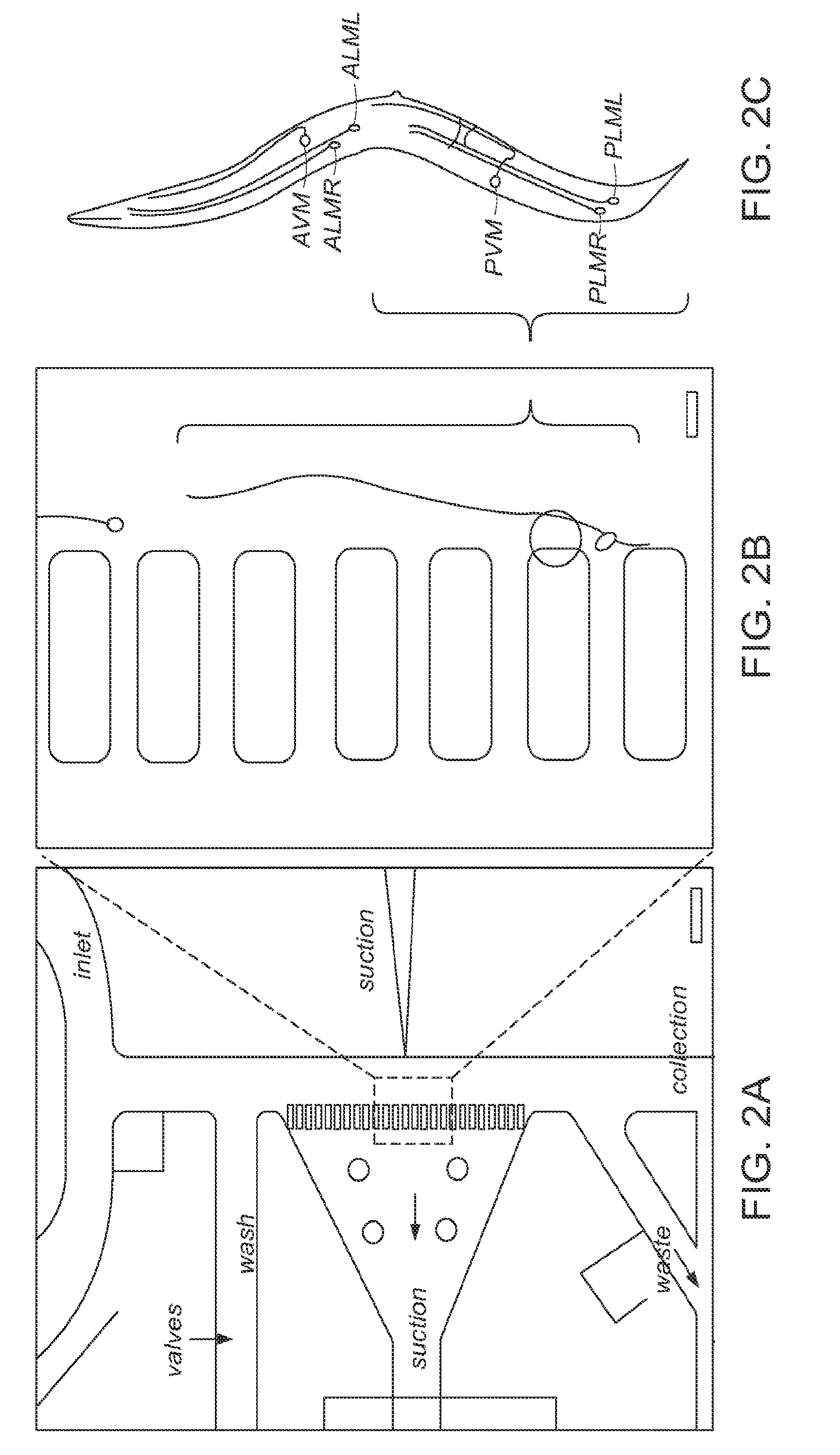High-throughput, whole-animal screening system
- Summary
- Abstract
- Description
- Claims
- Application Information
AI Technical Summary
Benefits of technology
Problems solved by technology
Method used
Image
Examples
Embodiment Construction
[0024]The present invention utilizes small animals for high-throughput screening of biologically active materials. A preferred small animal is a nematode such as C. elegans or the embryos or larva of a zebrafish. Other animals that may be used in embodiments of the invention include, Saccharomyces cerevisiae (yeast), drosophilla (eggs), and other nematodes. The present disclosure will focus on C. elegans, but it should be noted that wherever C. elegans is mentioned, other small animals may be used. C. elegans is a preferred animal for several reasons. This animal, approximately 50 μm in diameter, can be micro-manipulated inside microfluidic chips and can be directly exposed to harsh ambient environments. This animal can survive a wide range of environmental stress, temperature ranges, pH conditions, and salinity. These animals can be kept alive for months without feeding.
[0025]The C. elegans worm is optically transparent so that the fate of every single cell type in the worm can be ...
PUM
 Login to View More
Login to View More Abstract
Description
Claims
Application Information
 Login to View More
Login to View More - R&D
- Intellectual Property
- Life Sciences
- Materials
- Tech Scout
- Unparalleled Data Quality
- Higher Quality Content
- 60% Fewer Hallucinations
Browse by: Latest US Patents, China's latest patents, Technical Efficacy Thesaurus, Application Domain, Technology Topic, Popular Technical Reports.
© 2025 PatSnap. All rights reserved.Legal|Privacy policy|Modern Slavery Act Transparency Statement|Sitemap|About US| Contact US: help@patsnap.com



